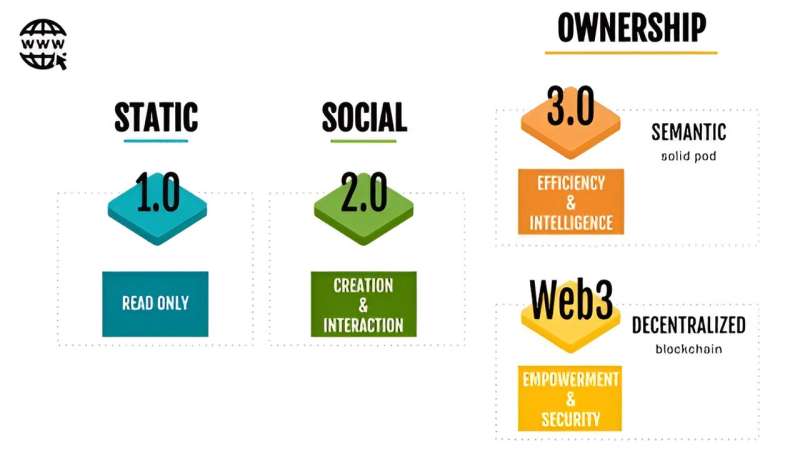This article has been reviewed according to Science X's editorial process and policies. Editors have highlighted the following attributes while ensuring the content's credibility:
fact-checked
proofread
Researchers propose a Web 3.0 streaming architecture and marketplace

Web 3.0 is an internet paradigm that is based around blockchain technology, an advanced database mechanism. Compared to Web 2.0, the current internet paradigm, Web 3.0 provides some added advantages, such as transparency and decentralized control structures. This is because Web 3.0 is designed to work over trustless and permissionless networks.
Unfortunately, due to certain technical difficulties, the implementation of Web 3.0 media streaming requires modifications to the service architecture of existing media streaming services. These difficulties include the degradation of user experience and Web 3.0's incompatibility with certain operating software and browsers.
To address these issues, a team of researchers, led by Assistant Professor Gi Seok Park from Incheon National University undertook a novel project. The researchers proposed an end-to-end system architecture that is specifically designed for Web 3.0 streaming services. They made use of Inter-Planetary file system (IPFS), a type of Web 3.0 peer-to-peer (P2P) data storage technology, to reduce service delays and improve user experience.
Their findings were recently published in the journal IEEE Transactions on Services Computing.
Web 3.0 services have also been implemented using the application programming interfaces of third-party service providers called IPFS pinning service. Unfortunately, they limit performance. Taking this into consideration, the team designed a system in which they were able to fully control the blockchain nodes by deploying their own IPFS nodes that ran directly on their system. They also implemented new protocols that cached content and scheduled chunks on their IPFS nodes, which enabled the nodes to collaborate with each other and quickly download data.
The researchers found that their proposed system was compatible with IPFS nodes and still ran on IPFS P2P networks. They also launched Retriever, a media non-fungible token (NFT) marketplace that was developed using Web 3.0 technologies. Retriever allowed users to watch video content and ensure data privacy and was also found to be compatible with multiple mobile devices.
"Our service can allow creators to monetize their video content and even sell their video content if they wish to. This is because each content will now be managed as an NFT. More importantly, this entire process will be fair and transparent," says Dr. Park.
"Our proposed service would establish digital trust from users. Moreover, thanks to blockchain technology, web services will no longer need to force trust on users in the future. All transactions will be made fairly through smart contracts and recorded transparently through the blockchain ledger," says Dr. Park.
More information: Ryeong Hwan Kim et al, Moving Real-Time Services to Web 3.0: Challenges and Opportunities, IEEE Transactions on Services Computing (2023). DOI: 10.1109/TSC.2023.3307153





















